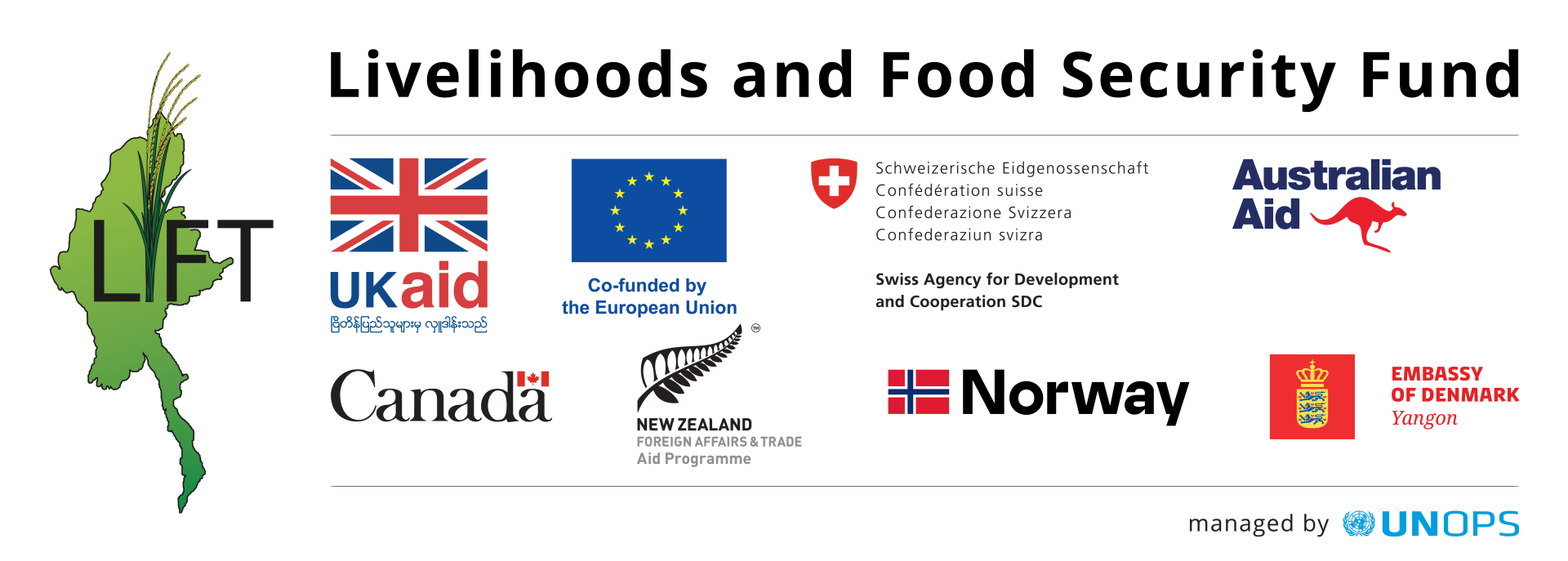
Tat Lan teams in central Rakhine State are delivering recovery assistance to Cyclone Komen affected villagers. Tat Lan, a USD 22 million development programme funded by LIFT, supports some 150,035 villagers in the four Townships, Myebon, Kyauk Phyu, Minbya and PaukTaw. The programme is building resilience, sustainable food security and improving incomes in communities that are vulnerable to disasters such as this, writes Jennifer MacIntyre from the Tat Lan Communcations team.
USD$214,000 has been re-allocated from existing budget towards recovery activities.
In Myebon, 45 contaminated and damaged water sources - village ponds and wells- are being pumped out and cleaned with urgency, so they can refill before the anticipated end of the monsoon season in the middle of September.
Ten days of waist deep flood water associated with the cyclone destroyed 28,662 acres of paddy plantations in Minbya, Myebon and Kyauk Phyu.
Access to paddy rice has been severely limited, due to demand throughout the country. However, Tat Lan has managed to distribute 1,600 baskets of fast maturing paddy seed for replanting in Minbya and Myebon. Dagon 2 is new breed of paddy seed from the International Rice Research Institute (IRRI), and RD 41 is a paddy seed from Vietnam. These plants will be ready for harvest in 110 days compared with the normal 142 day growth, making up for the lost month of growth.
In Kyauk Phyu, 13 villages were flooded, losing 2,500 acres of paddy. These farmers have been provided with one basket of paddy and fertilizer for each acre of lost plantation.
While flood waters destroyed a total of 36,086 acres of paddy throughout Tat Lan villages, there is good news in the resilience of some new breeds of paddy seed, that have withstood the ravaging rain of cyclone Komen.
Four days after the Cyclone Komen floods receded, U Hla Win took fellow farmers into his Minbya paddy field to show them the resilience of his Sin Thwe Latt seedlings. Fourteen days after being transplanted, these seedlings have survived six days of devastating rain, waist deep flooding and silt mud in the aftermath of the cyclone. “I am so happy my plants survived six days under water. Our traditional seeds are not so strong,” says U Hla Win with amazement.
In its commitment to build sustainable food security, the Tat Lan programme successfully encouraged 335 farmers in 70 different villages to produce 6,767 baskets of new high yielding salt-tolerant and flood-resilient paddy seeds. This includes Sin Thwe Latt, a high yield variety which was developed by Yezin, Myanmar’s Department of Agricultural Research.
Bred from a paddy plants imported from the Philippines by the International Rice Research Institute (IRRI), and a locally grown paddy variety, Sin Thwe Latt has a strong, long tap root and secondary roots that stretch beneath the surface of the ground. So, seedlings are well secured to the earth and able to survive flooding within 14 days of planting.

Tat Lan has also built 93 miles of six-foot high embankments, 40 sluice gates and five culverts to protect 16,000 acres of coastal paddy land. Though the extreme conditions created by Cyclone Komen, and a sea surging king tide put this infrastructure under stress, 87 miles of Tat Lan embankments proved to be robust in the face of this cyclone.
Only two and a half miles were damaged in Kyauk Phyu, Minbya and Myebon, where communities are now rebuilding these embankments with cash-for-work labourers. This community labour, which has a social protection commitment to employ vulnerable members of the community, has proved to be very effective.
Villagers build a strong sense of community spirit as they work together, but it is the sense of empowerment this work generates that best assures the sustainability of Tat Lan developments. Having built the ponds and embankments with their own hands, village committees are able to mobilize their communities to maintain the infrastructure.


